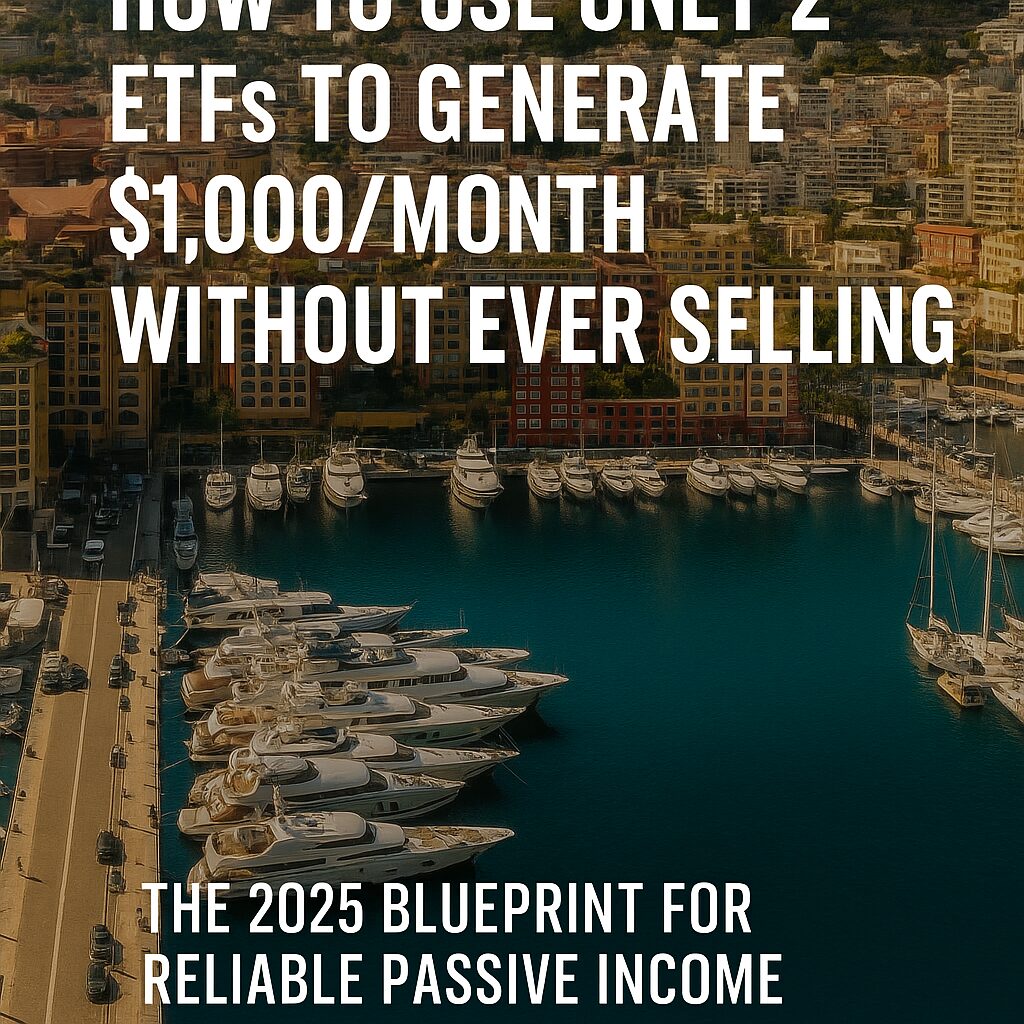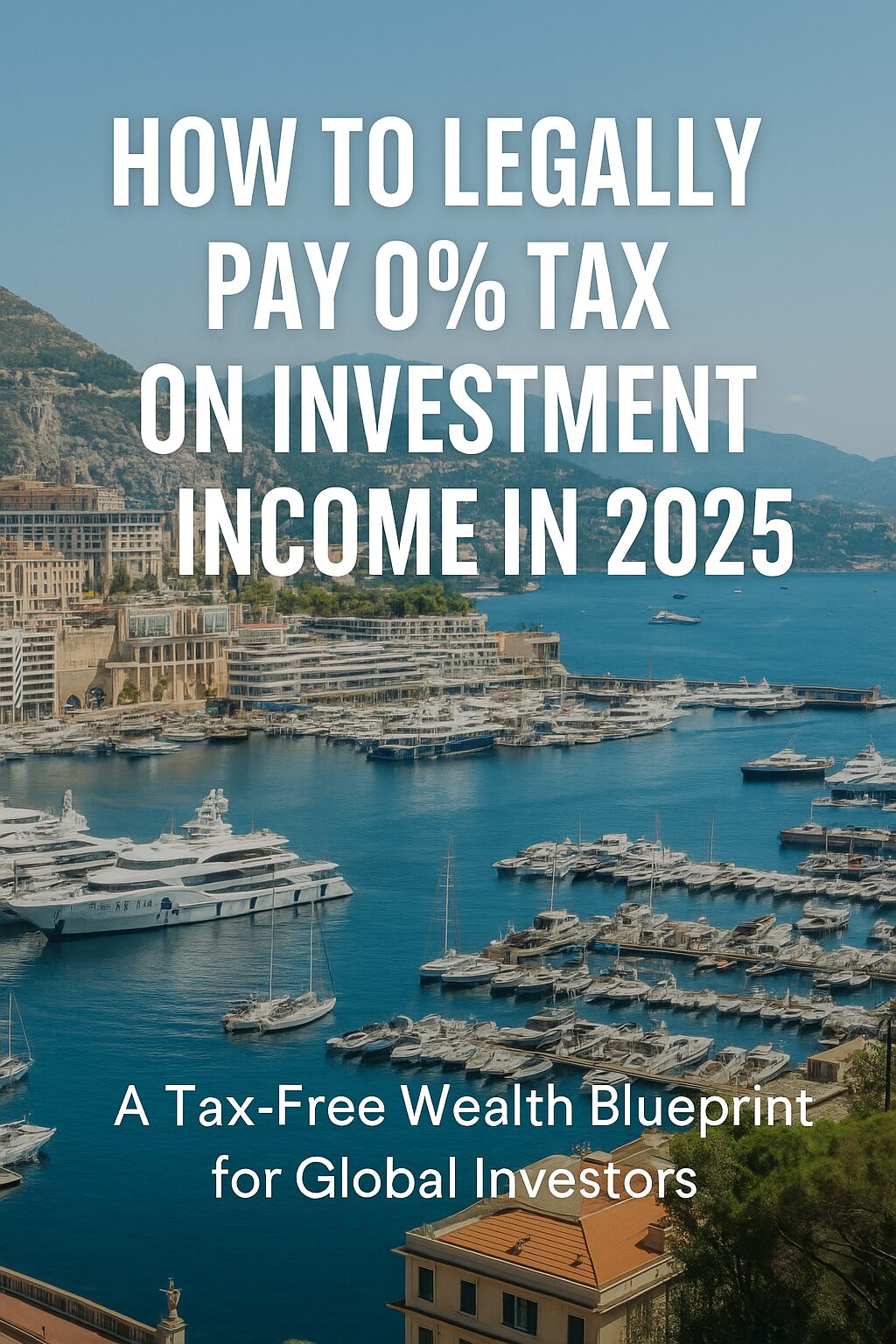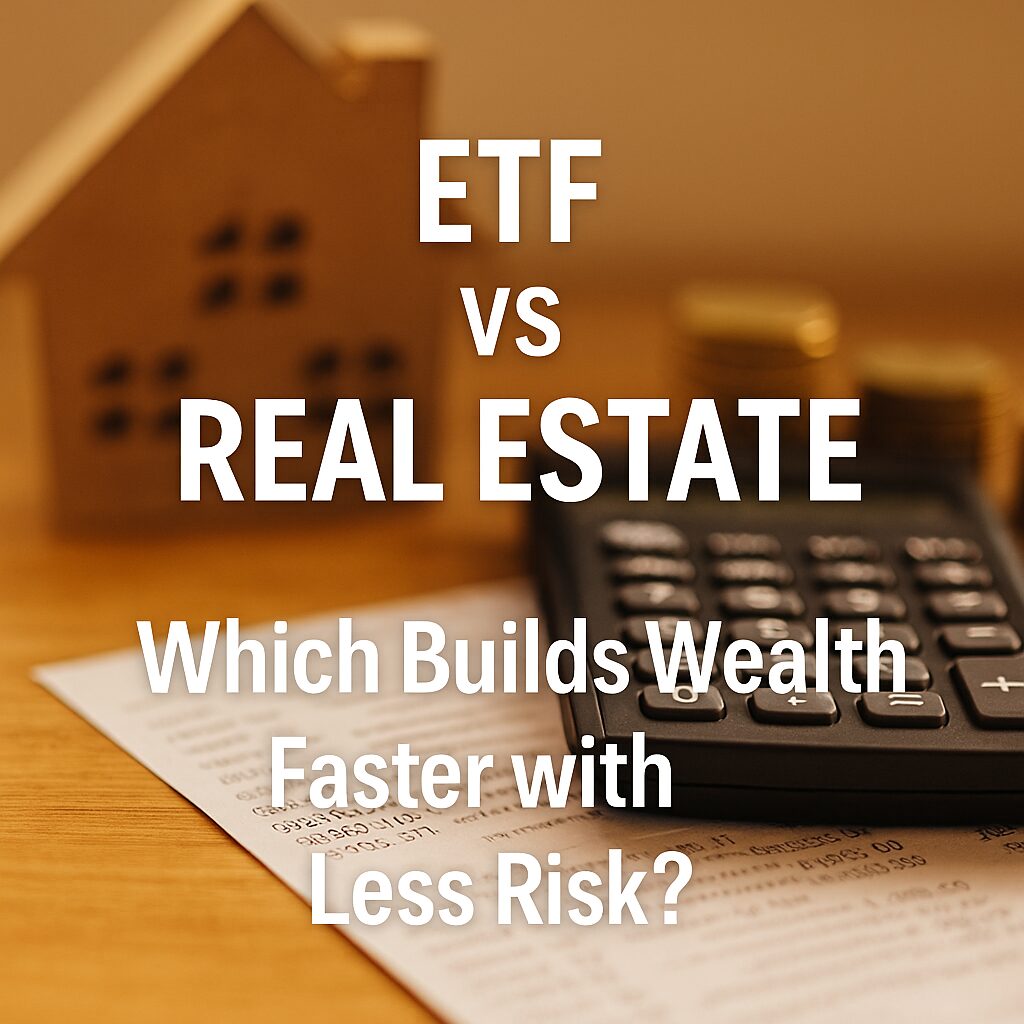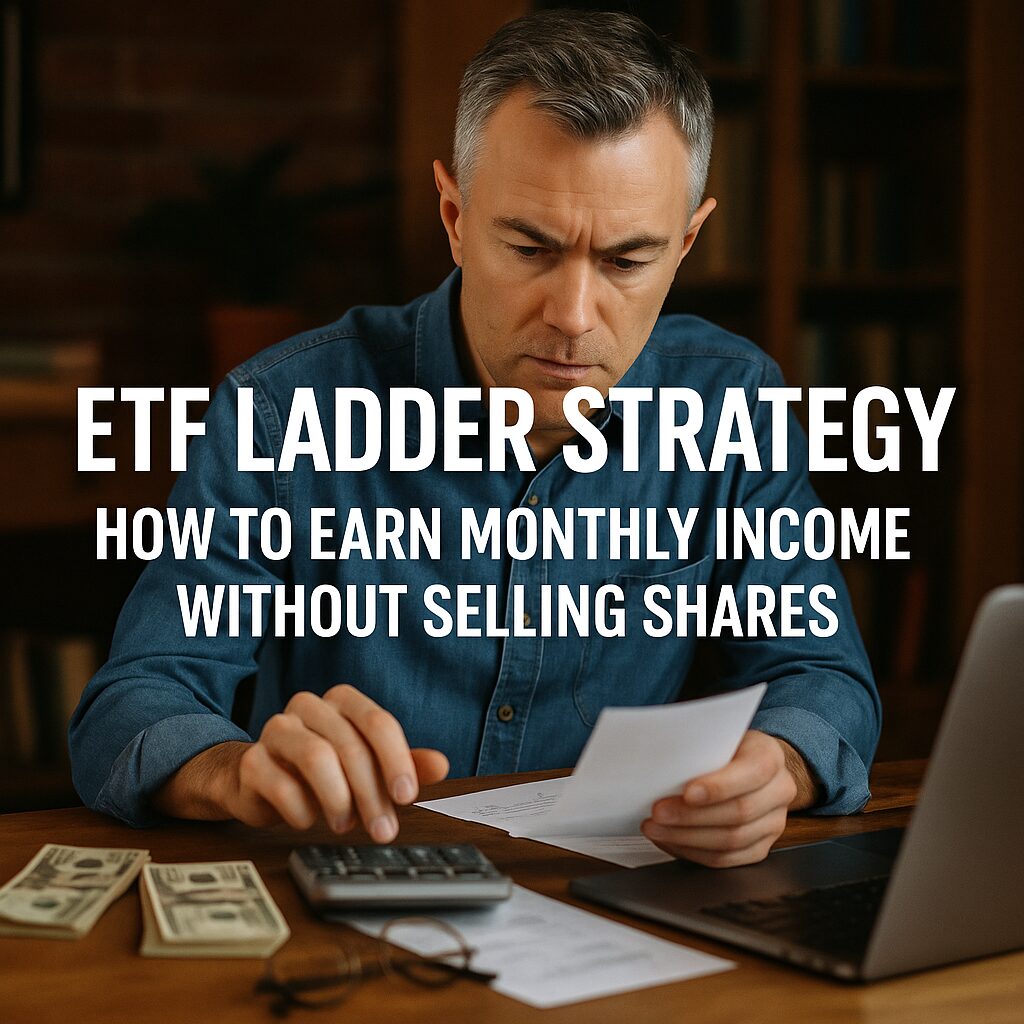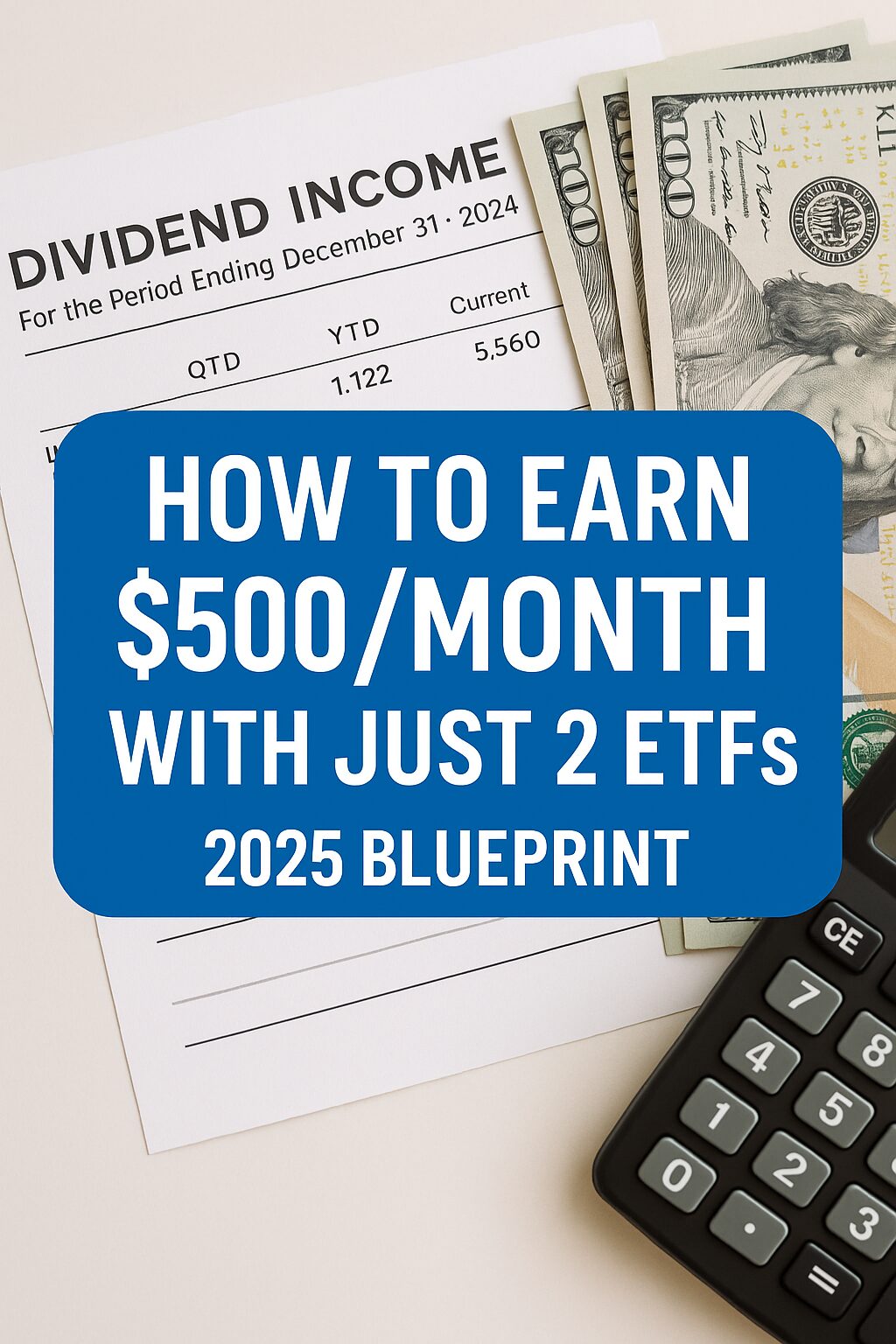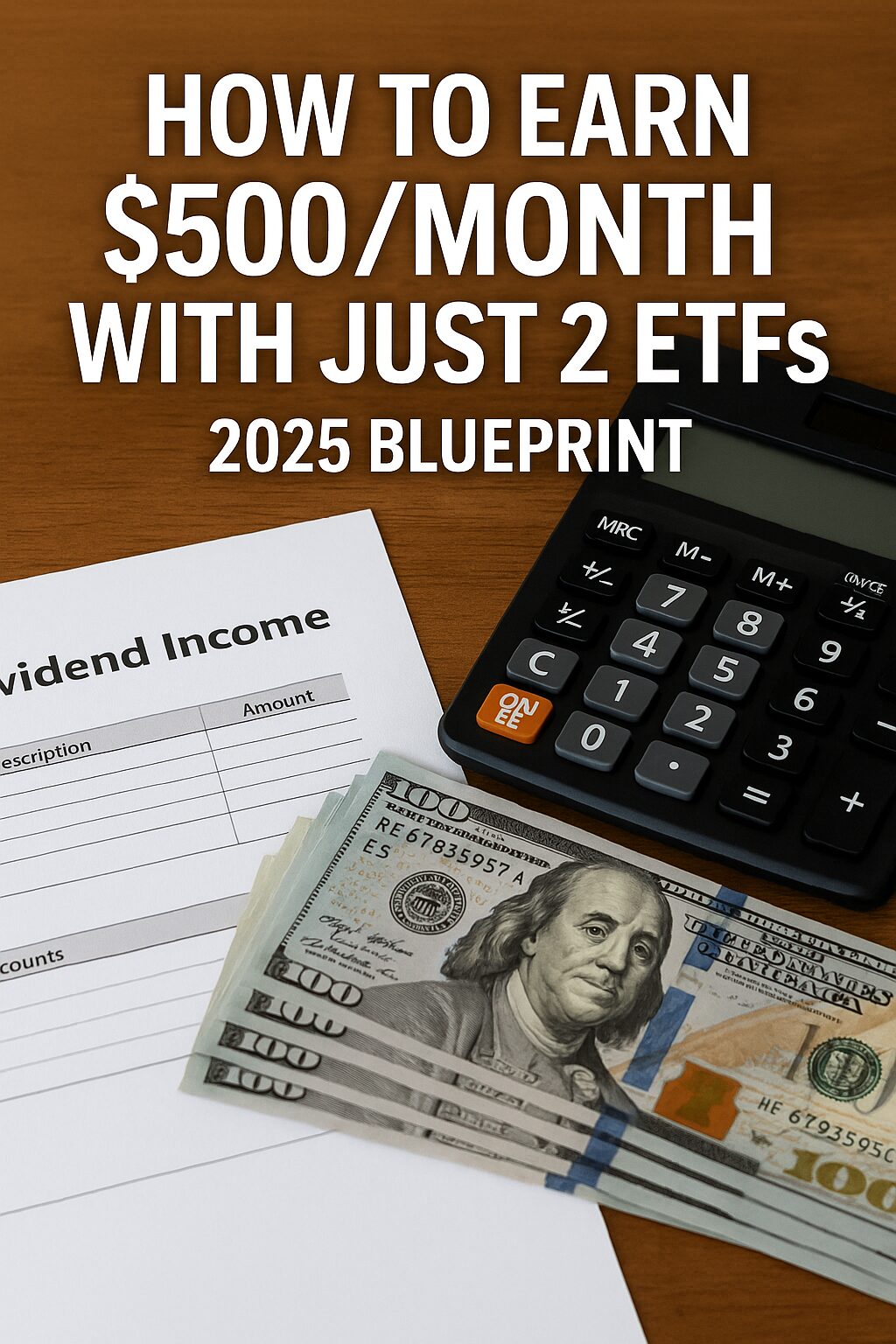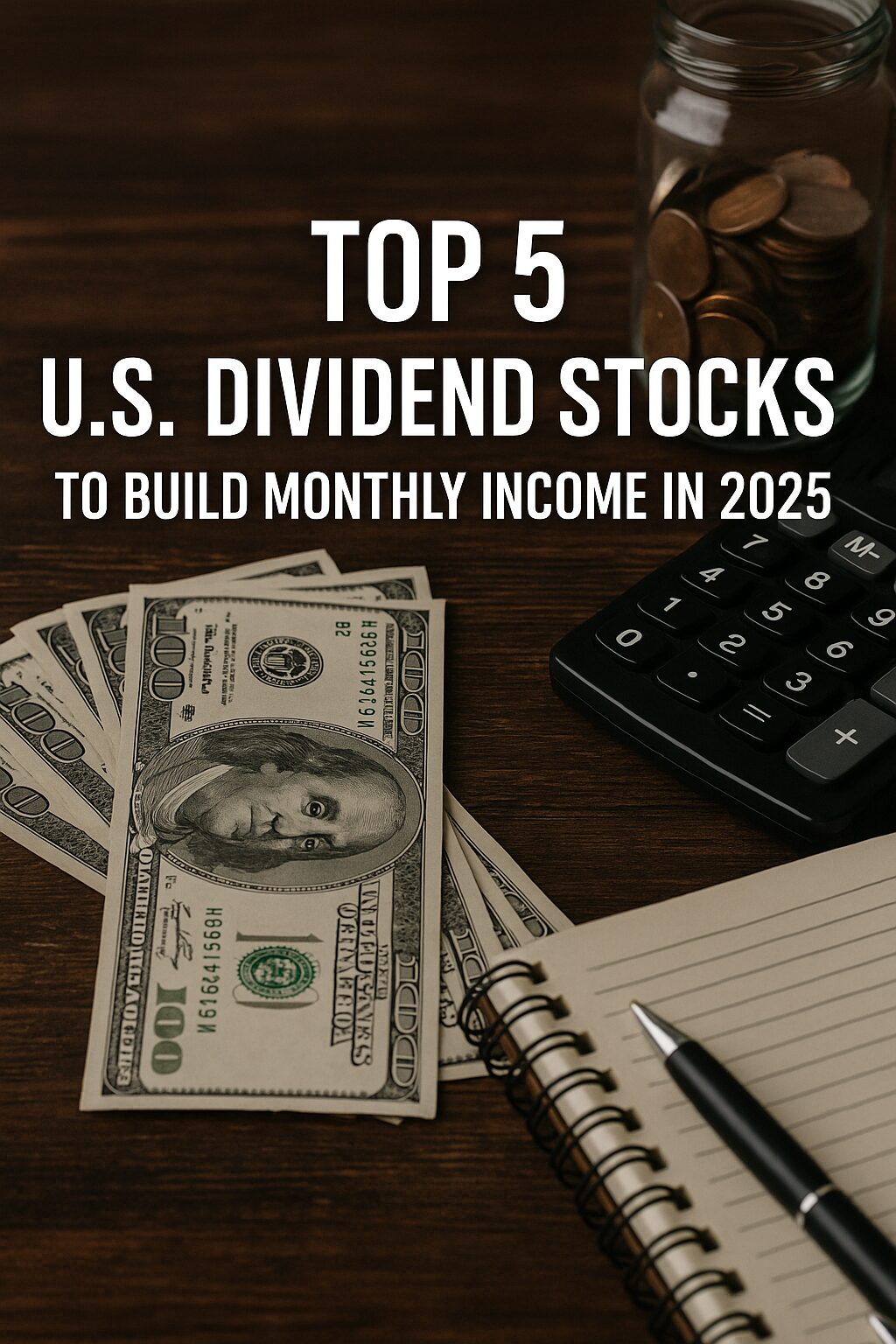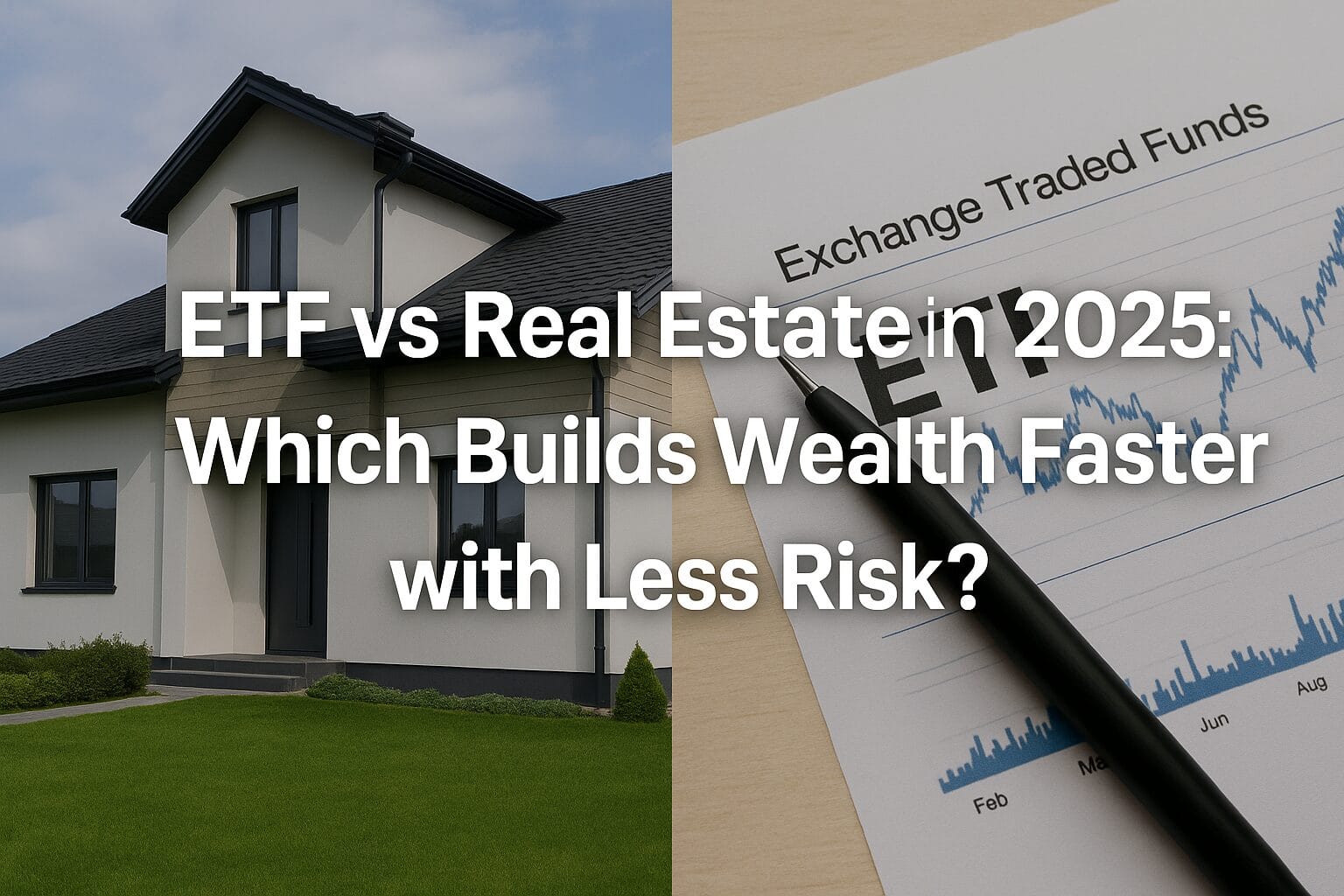Introduction: Passive Income Without Selling — A Dream Come True?
Imagine generating $1,000 every month—automatically—from just two ETFs. No trading, no active management, no market timing. And the best part? You don’t have to sell a single share to get that money.
In 2025, this is not only possible—it’s already being done by thousands of smart investors. Whether you’re aiming for financial independence, early retirement, or just a supplemental income stream, dividend-paying ETFs offer one of the simplest, lowest-maintenance ways to build real monthly cash flow.
This guide shows exactly how to structure a two-ETF portfolio that generates consistent monthly income. We’ll break down ETF selection, capital requirements, reinvestment strategies, tax considerations, and how to make it sustainable for decades.
1. Why Monthly Dividend ETFs Beat Traditional Investment Income
Traditional income portfolios rely on a mix of bonds, real estate, or annuities. But in 2025, these have major limitations:
- Bonds are volatile with low yields.
- Real estate requires active management and carries legal/tax risks.
- Annuities offer low flexibility and often high fees.
Monthly dividend ETFs, on the other hand:
- Provide consistent income aligned with your living expenses.
- Trade like stocks—liquid and flexible.
- Are low-cost, transparent, and diversified.
And with just two carefully selected ETFs, you can balance stability and growth, covering income today and capital preservation for tomorrow.
2. ETF #1 – The Income Engine (Monthly Payer)
Your first ETF should be a high-yield, monthly-paying ETF. This is your primary cashflow generator.
Top Pick: JEPI (JPMorgan Equity Premium Income ETF)
- Dividend Yield (2025): ~7%
- Distribution: Monthly
- Strategy: Combines U.S. blue-chip stocks with covered call options to enhance yield
- Risk Level: Moderate
Alternatives:
- QYLD – Higher yield but more volatile
- DIVO – Lower yield, higher quality dividend growth stocks
- PFFD – Preferred shares, stable income
Why JEPI?
It offers relatively high yield without destroying capital, thanks to its covered call strategy. It’s ideal for the “don’t sell anything” investor.
3. ETF #2 – The Growth & Stability Anchor
Your second ETF balances the income from ETF #1 by focusing on long-term growth, dividend reliability, and capital appreciation.
Top Pick: SCHD (Schwab U.S. Dividend Equity ETF)
- Dividend Yield (2025): ~3.5%
- Distribution: Quarterly
- Holdings: Top U.S. dividend growth companies (Pepsi, Texas Instruments, etc.)
- Expense Ratio: 0.06%
Alternatives:
- VYM – Broader coverage, slightly higher yield
- DGRO – Focuses on dividend growth rate
- HDV – Conservative, high-quality dividend stocks
Why SCHD?
It consistently outperforms other dividend ETFs in total return and has a history of increasing dividends every year.
4. How to Combine JEPI + SCHD to Generate $1,000/Month
Let’s get to the numbers.
Scenario: $1,000/month = $12,000/year
To achieve this, you’ll need a combination of yield and capital:
| ETF | Allocation | Yield | Annual Income |
|---|---|---|---|
| JEPI | 60% | 7.0% | $504 per month |
| SCHD | 40% | 3.5% | $116 per month |
| Total | 100% | ~5.5% blended | $620/month |
Wait—that’s only $620/month. How do we reach $1,000?
Solution:
- Increase capital invested
- Reallocate more toward JEPI
- Supplement with reinvested dividends or other income
5. Capital Requirements to Hit $1,000/Month
Let’s estimate how much capital is needed.
Case A – Conservative (more SCHD)
- JEPI 50%, SCHD 50%
- Blended yield: ~5.2%
- Capital needed = $230,000
Case B – Aggressive (more JEPI)
- JEPI 80%, SCHD 20%
- Blended yield: ~6.2%
- Capital needed = $195,000
Case C – Ultra Conservative (SCHD only)
- Yield: ~3.5%
- Capital needed = $345,000
Most investors choose a blended path—rebalancing as market conditions change.
6. Reinvesting vs. Withdrawing: What’s Smarter?
In the early years, reinvesting dividends can dramatically grow your income.
Example:
- $200,000 at 6% yield = $12,000/year
- Reinvested for 5 years → $16,000+/year without additional capital
But once you hit your monthly income target, shift to withdrawing for living expenses. ETFs like JEPI and SCHD are liquid—you can always access principal if needed, but the goal is never to sell.
7. Tax Considerations (U.S. + Global)
🇺🇸 U.S. Investors
- JEPI income = taxed as ordinary income
- SCHD = qualifies for 15% qualified dividend tax rate
- Hold JEPI in Roth IRA for max tax protection
- SCHD can be held in taxable accounts efficiently
International Investors
- Ireland-domiciled ETFs (e.g., IDVY, IUSA) often better due to lower withholding tax
- Consider tax treaties: U.S. dividends → Europe (15%), Asia (30%)
- Use local tax-sheltered accounts (ISA, TFSA, Super, etc.)
8. Why This Strategy Works Long-Term
- ETFs rebalance automatically
- Dividends are consistent even in market drops
- You retain 100% ownership of capital
- No reliance on capital gains or price growth
This means:
- Less stress during downturns
- Reliable cashflow that grows with reinvestment
- True passive income you can count on
9. Common Mistakes to Avoid
- Relying on 1 ETF only
- Choosing extreme high-yield ETFs (QYLD, RYLD) without understanding risk
- Ignoring taxes
- Not rebalancing based on life stage
10. Final Thoughts: $1,000/Month Is Just the Beginning
With just two ETFs and a well-structured portfolio, you can build monthly cashflow that lasts for life—without ever selling a share.
In fact, many investors scale this to $2,000, $3,000, or more as they reinvest, optimize taxes, and increase capital.
Start small, start consistent, and automate your freedom.
Because passive income isn’t a dream anymore—it’s a design.
